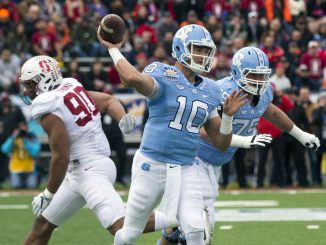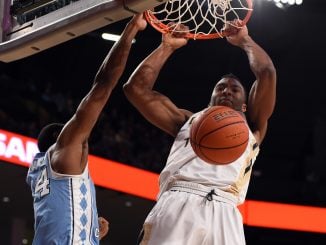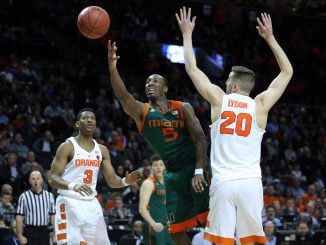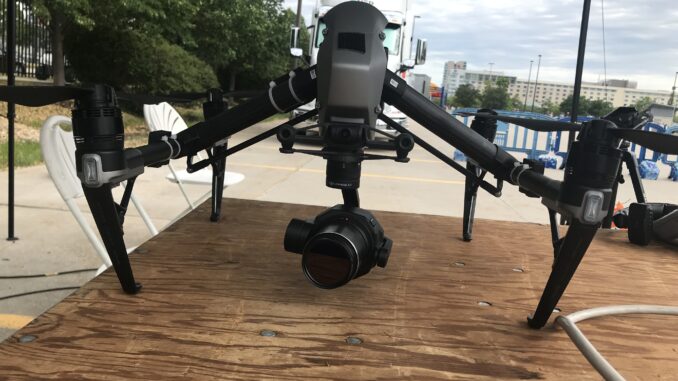
OMAHA, Neb. — It’s a half-hour before ESPN’s broadcast of the Virginia-Mississippi State College World Series game goes live. That means it’s time to take Cinderella out of the trunk.
Mike Shea carefully lifts Cinderella out of the back of his car and carries her to the spot where her long night will begin. She hums and whirs as she goes through her initialization routine.
Cinderella is a DJI Inspire 2 drone. She comes with a price tag of somewhere between $3,200 and $5,000, not including the X7 camera with interchangeable prime lenses that she’s carrying. She has a top speed of 58 mph, which she can reach from zero in five seconds and can descend at a top speed of nine meters per second.
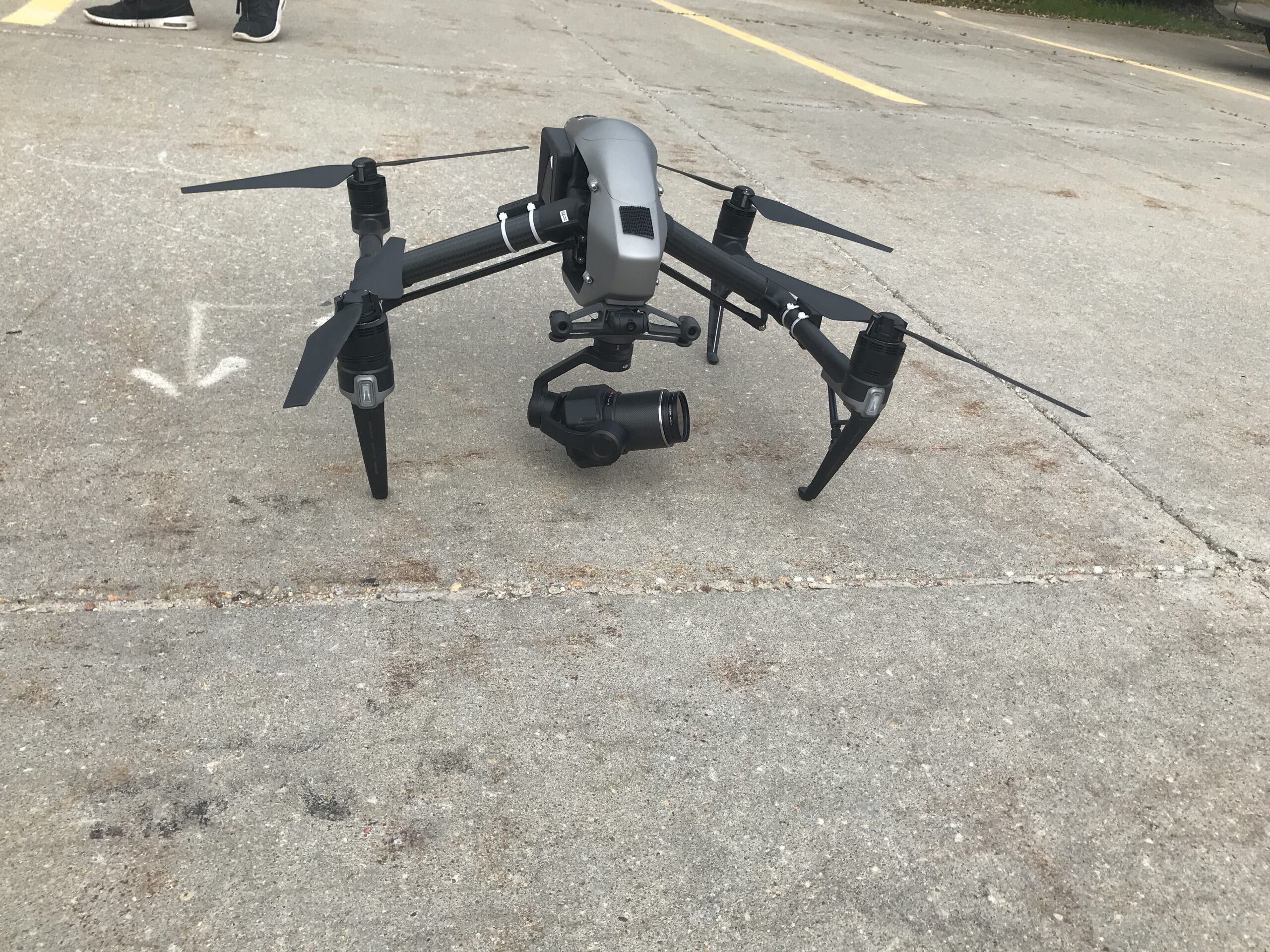
And yes, she’s named after a princess.
“All our drones are named after Disney characters,” said Shea, the drone pilot working the College World Series this year. It’s a nod to ESPN’s parent company. “There’s Belle, Jasmine. I think one is named Donald.”
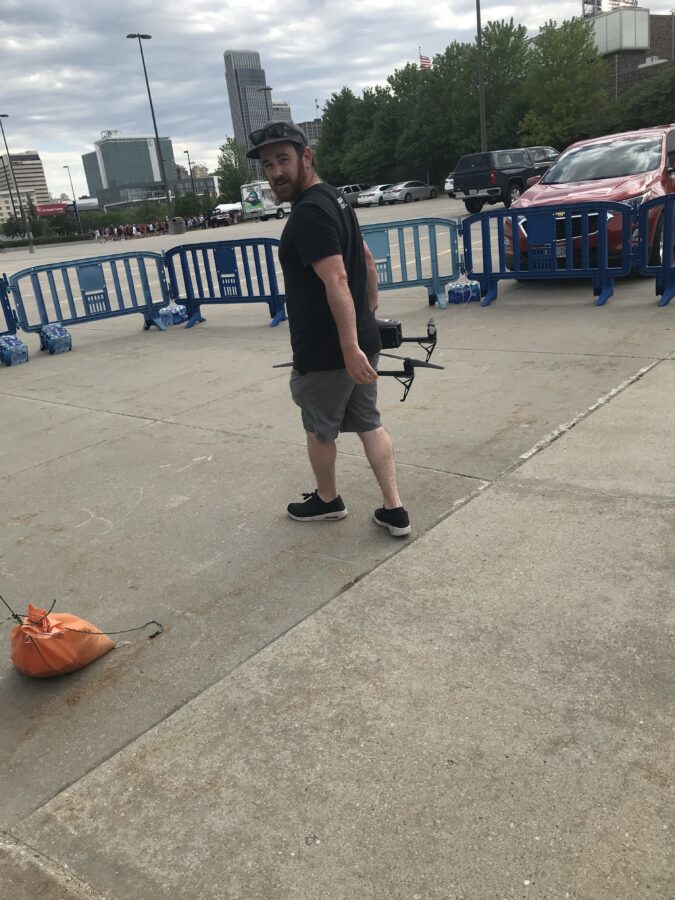
Shea is interrupted by a cell phone call from the director for that night’s game. They’re looking to have the opening establishing shot be an aerial view of a sign on the outside of the stadium welcoming fans to the 2021 CWS.
Shea eyes the sign and frowns.
“I can try,” he tells the director. “There’s a lot of foot traffic over there at the start of each game, so it might be tough. But I’ll let you know.”
Once ESPN is on air, Shea will be in constant communication with the director via headset with fiber optic link-up so he can let him know if there’s going to be a problem getting the shot.
There are other ways, however.
“We can illustrate that we don’t have a usable shot by pointing the camera straight down at the ground or just flying away from the stadium,” he said.
The problem with the location the director wants is that ESPN can’t fly the drone over people. So if fans are still entering the stadium near the sign, Shea would have to violate FAA rules to hover there.
“We have to abide by all FAA rules,” he said. “Never fly close to people. We have to file a flight plan. We need to get airspace authorization. This (the area around the stadium) is a no-fly zone. So we have to apply for a custom waiver.”
That’s true for many of the places Shea and Cinderella have been shooting. They’ve spent time between games driving around the city to get “scenics” — establishing shots of the Omaha area to use going into or coming back from breaks.
“We’ve been to the zoo, the botanical garden, the river, downtown,” Shea said. “We went to the horse riding academy to get some good cornfield shots.”
And each of those shots requires a laundry list of legal clearances.
“Coordinating with all the different places is the toughest part of the job,” he said. “We need to scout locations, find a good place to fly, then figure out who owns the location, figure out who to contact, contact them, get permission, check airspace from the FAA, make sure what authorization you need. About 99% of what we do is done before we get here. Flying’s the easy part.”
Flying isn’t all that easy, though. Shea has been building and racing drones for about seven years as a hobby. His day job was operating Steadicam (the camera attached to the operator by a harness) and jib (the camera on a long pole for aerial sideline shots) for ESPN in Bristol, Connecticut. When the network began experimenting with using drone technology, he was a natural to fill the role.
One of two drone cam pilots at ESPN (Ryan Humble, another camera operator and drone hobbyist, is the other), Shea began by shooting MLS soccer and spent 50 days at the MLS and NBA bubbles in Florida last year. Now he and Cinderella are branching out to college baseball.
Like blimps and helicopters, the drones provide ESPN with aerial shots but at a much lower price. Shea doesn’t see them as a replacement for the bigger aircraft, however.
“I think there’s a role for both of us,” he said. “The blimps and copters can get the big, wide establishing shots, while we’re able to get much closer to the action. If we switch lenses, we can get action on the field — catching an infield or outfield shift to show that to the viewer. We haven’t gotten called on for a replay yet, but I’m sure we will at some point over the 18 games here.”
The drone can fly to an altitude of 400 feet. By comparison, the top of the light towers ringing TD Ameritrade Stadium are about 180 feet. It can stay in the air for up to 15 minutes at a time. Cinderella gets grounded during rain, which is expected to arrive around two hours into the game.
“We don’t fly in any moisture,” Shea said. “Not necessarily because the drone can’t handle it, but if you get moisture on the lens, your shots are no good.”
The wind for the Virginia-MSU game is 16-18 mph, gusting to 22. “That’s just about the top limit of what we’re willing to fly in,” he said. “Number one, for safety, and two, so the shot looks good.”
Shea is operating out of an area near the stadium that ESPN has asked be referred to simply as “the secure landing zone.” As much as possible, he tries to get his shots for the broadcast while keeping Cinderella above the secure zone to ensure that no people are below. The opening shot the director wants might require them to drift away from that area slightly, which is why it could be problematic.
The third member of the team is Keegan, a freelancer hired when they arrived in Nebraska. He serves as the “spotter.” If there are people walking below the drone, he’ll let Shea know. If there are other aircraft in the area — helicopters and banner-pulling planes are two common obstacles — he’ll let Shea know.
Keegan also has another key role in the process.
“The FAA says that the drone must be in line of sight at all times,” Shea explains.
That simply means you need to see the drone in order to fly it. Normally, that’s not a problem, but Shea isn’t just flying, he’s also operating the camera.
“If I ever need to look down at my monitor to compose my shot, we need to have a set of eyes always looking at the drone. If there’s a problem — if I lose control, we need to know where that drone is and what its orientation is so we can bring it back manually.”
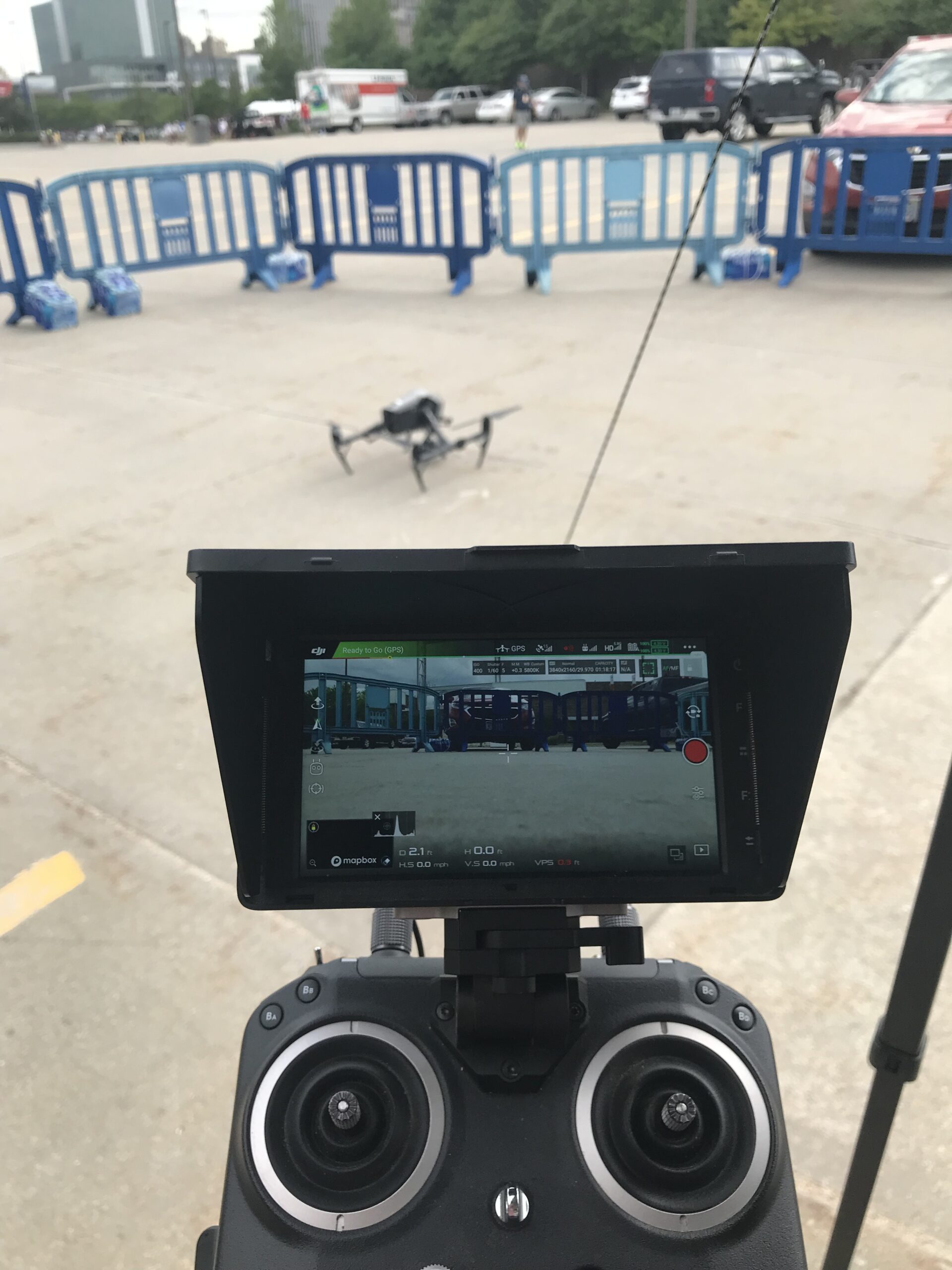
“If all else fails, there’s a button on the controller that will return it to home,” Shea adds. “It has GPS, barometer and can come back to the secure landing zone. We have never used that button. That is for emergencies only. We’ve never had to use it, and I don’t expect we would ever have to use it.”
At about 6 p.m. Central Time, ESPN’s broadcast of the College World Series, game eight begins. Viewers at home see a sign atop TD Ameritrade Stadium welcoming fans to the CWS. Inside the ballpark, if fans know where to look, they can see a small black shape, hovering above a secure, undisclosed location somewhere outside.

